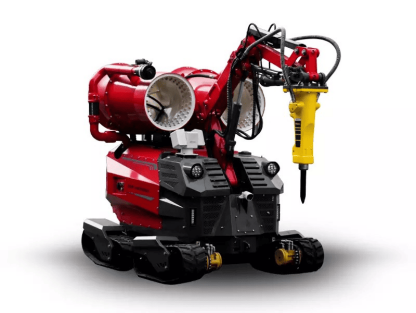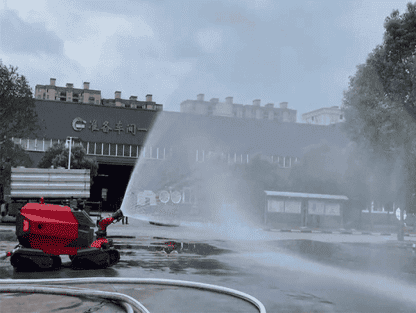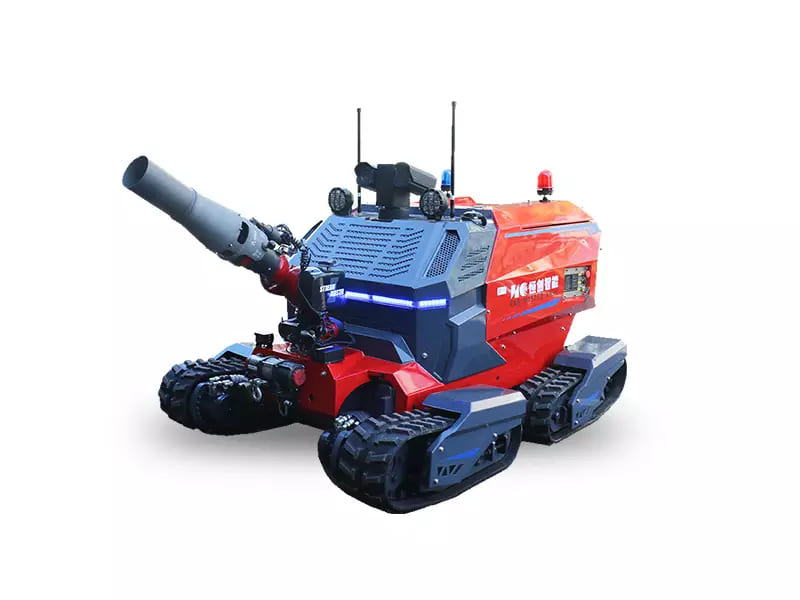The increasing frequency and severity of fires, coupled with the complexities of modern urban and industrial environments, have highlighted the need for advanced firefighting technologies. Firefighting robots represent a significant evolution in emergency response, offering groundbreaking solutions to enhance safety, efficiency, and effectiveness. This article explores the applications of firefighting robots, their evolution, and how they are revolutionizing emergency response.
Firefighting robots are specialized machines designed to assist or replace human firefighters in dangerous environments. Equipped with advanced sensors, artificial intelligence, and mobility systems, these robots tackle fires, conduct search-and-rescue operations, and handle hazardous materials in ways that humans cannot.
The integration of robotics in firefighting is no longer a futuristic vision but an urgent necessity. Fires in industrial zones, wildlands, and urban areas often expose firefighters to extreme risks, including toxic fumes, collapsing structures, and unpredictable fire behavior. Robotics in firefighting not only safeguards human lives but also enhances operational efficiency by executing precise, data-driven actions.
Over the years, firefighting has transitioned from manual methods, such as bucket brigades, to sophisticated robotic firefighting technologies. This evolution reflects humanity's relentless pursuit of innovation to address one of our most primal threats: fire.
The first firefighting robots were rudimentary devices, often resembling remote-controlled vehicles equipped with water cannons. These remote control fire fighting robots allowed operators to suppress fires from a safe distance. However, their limited autonomy and basic capabilities restricted their effectiveness.
The past decade has seen remarkable advancements in artificial intelligence, sensor technology, and mobility systems. Modern robotic firefighters are equipped with AI-driven algorithms that enable real-time decision-making, thermal imaging sensors for detecting heat sources, and all-terrain mobility for navigating complex environments. These advancements have paved the way for automatic fire fighting robots capable of operating independently in dynamic situations.
The latest trend in robotic firefighting involves collaboration between humans and robots. Rather than replacing human firefighters, these robots act as teammates, sharing real-time data, performing high-risk tasks, and enhancing overall efficiency. This shift from human-led operations to collaborative solutions marks a significant milestone in the evolution of firefighting robots.

Firefighting robots are versatile tools with applications across various domains. Below, we explore their primary functions:
Fires often occur in unstable structures, toxic atmospheres, or areas with limited visibility. Robotic firefighters are ideal for navigating these environments, locating survivors, and assessing risks.
Fire engine robots and fire truck robots are designed to deliver targeted extinguishing agents, such as water, foam, or chemical suppressants, to fires in industrial zones, wildlands, or high-risk areas.
Firefighter robots are indispensable in scenarios involving hazardous materials. They can neutralize chemical spills, contain gas leaks, or address radioactive threats without endangering human lives.
Robots in firefighting are not limited to reactive tasks. Autonomous robots play a crucial role in fire prevention and inspection by conducting risk assessments and monitoring potential fire hazards.
Fire robot assistants enhance the efficiency of human firefighting teams by performing auxiliary tasks:
Certain fire scenarios require specialized robotic solutions:

While firefighting robots offer numerous advantages, they are not without challenges. Here, we examine the obstacles and emerging trends shaping the future of robotic firefighting.

| Aspect | Traditional Firefighting | Robotic Firefighting |
|---|---|---|
| Risk to Human Lives | High risk due to direct exposure | Minimal risk as robots handle dangerous tasks |
| Efficiency | Limited by human endurance | Continuous operation without fatigue |
| Precision | Depends on human skill | AI-driven precision targeting |
| Cost | Lower initial cost | High initial investment |
| Adaptability | Limited in extreme conditions | High adaptability with advanced sensors and AI |
A firefighting robot is a machine designed to assist or replace human firefighters in combating fires, conducting search-and-rescue missions, and handling hazardous materials.
Firefighting robots use a combination of sensors, cameras, and AI algorithms to detect fire sources, assess risks, and execute tasks such as extinguishing fires or locating survivors.
Challenges include high costs, limited battery life, and difficulty navigating complex terrains.
Firefighting robots are transforming emergency response across industries. By reducing risks to human lives, enhancing operational efficiency, and tackling fires in challenging environments, these machines are revolutionizing how we combat one of humanity's oldest threats.
As technology advances, the potential for robotics in firefighting continues to grow. Innovations such as swarm robotics, enhanced AI, and hybrid human-robot teams promise a future where fire emergencies are managed with unparalleled precision and safety. Continued investment in robotic firefighting technologies will save lives, protect property, and redefine the boundaries of what is possible in emergency response.